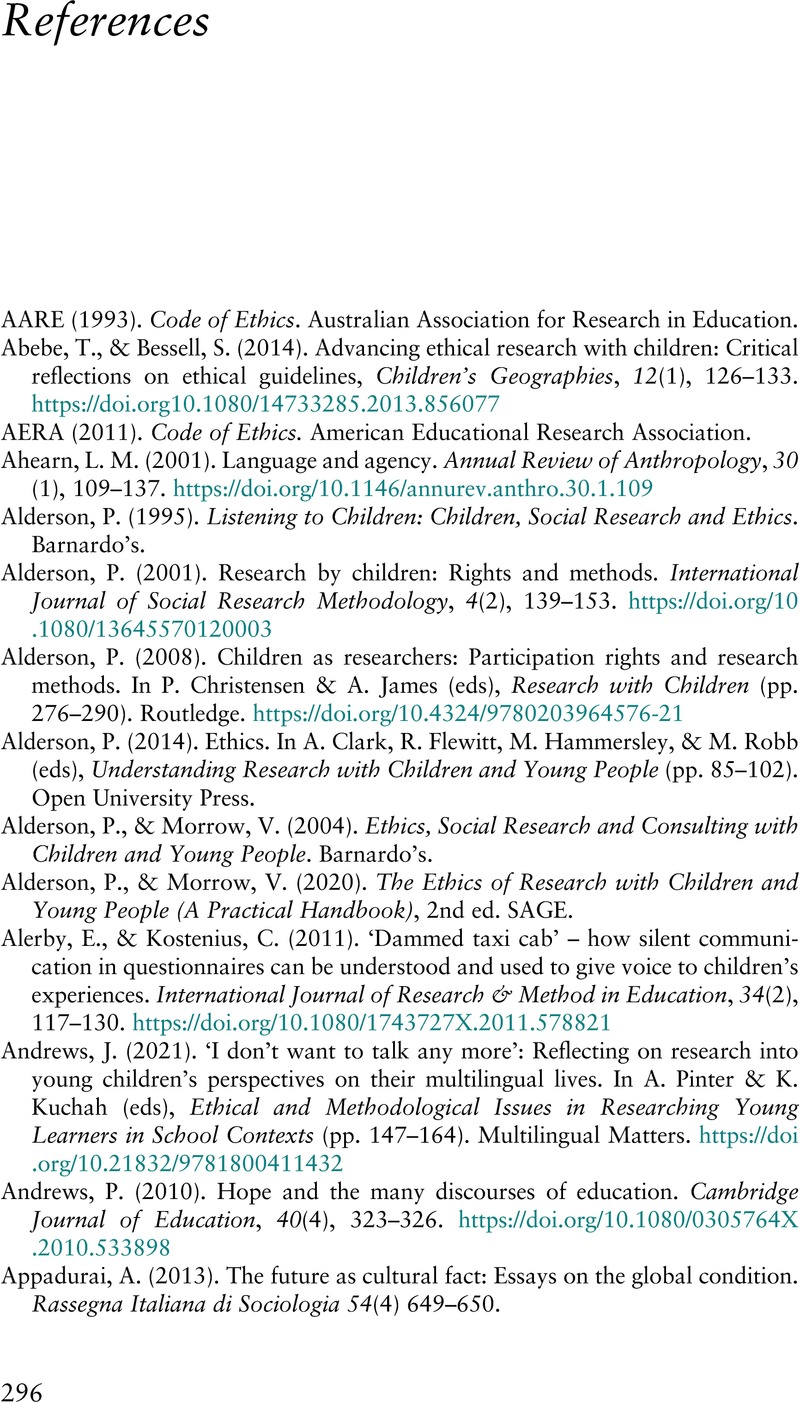Book contents
- Engaging Children in Applied Linguistics Research
- The Cambridge Applied Linguistics Series
- Engaging Children in Applied Linguistics Research
- Copyright page
- Contents
- Figures
- Tables
- Series Editors’ Preface
- 1 Setting the Scene
- 2 From Traditional to Contemporary Conceptions of Childhood
- 3 Voice, Agency and Participation
- 4 Child-Centredness and Democratic School Structures
- 5 Children’s Roles and Status in Applied Linguistics Research
- 6 Filling the Gap: What Kind of Research Is Needed?
- 7 Ethical Issues and Dilemmas
- 8 Towards Children’s Active Engagement in Applied Linguistics Research
- Appendix of Studies
- References
- Index
- References
References
Published online by Cambridge University Press: 05 October 2023
- Engaging Children in Applied Linguistics Research
- The Cambridge Applied Linguistics Series
- Engaging Children in Applied Linguistics Research
- Copyright page
- Contents
- Figures
- Tables
- Series Editors’ Preface
- 1 Setting the Scene
- 2 From Traditional to Contemporary Conceptions of Childhood
- 3 Voice, Agency and Participation
- 4 Child-Centredness and Democratic School Structures
- 5 Children’s Roles and Status in Applied Linguistics Research
- 6 Filling the Gap: What Kind of Research Is Needed?
- 7 Ethical Issues and Dilemmas
- 8 Towards Children’s Active Engagement in Applied Linguistics Research
- Appendix of Studies
- References
- Index
- References
Summary

- Type
- Chapter
- Information
- Engaging Children in Applied Linguistics Research , pp. 296 - 323Publisher: Cambridge University PressPrint publication year: 2023



